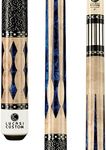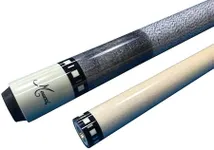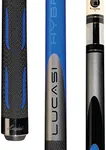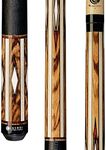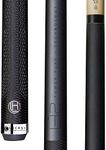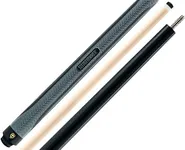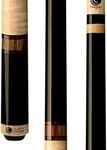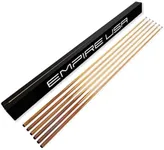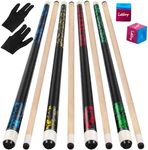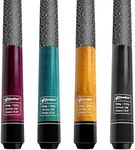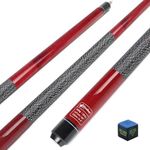Buying Guide for the Best Pool Break Cues
Choosing the right pool break cue can significantly impact your game. A break cue is specifically designed to provide the power and control needed to break the rack effectively. When selecting a break cue, it's important to consider various specifications that can influence your performance. Understanding these key specs will help you make an informed decision and find the best fit for your playing style and needs.WeightThe weight of a break cue is crucial because it affects the power and control of your break shot. Break cues typically range from 18 to 21 ounces. Lighter cues (18-19 ounces) allow for faster movement and can generate more speed, which is ideal for players who rely on quick, powerful breaks. Heavier cues (20-21 ounces) provide more mass, which can help in transferring more energy to the balls, making them suitable for players who prefer a more controlled and forceful break. Choose a weight that complements your strength and playing style.
Tip HardnessThe hardness of the cue tip is important because it influences the amount of energy transferred to the cue ball. Break cues usually have harder tips compared to regular playing cues. Hard tips (such as phenolic tips) are more durable and provide a solid hit, which is essential for breaking the rack effectively. Medium-hard tips offer a balance between control and power. If you are a beginner, a medium-hard tip might be a good starting point, while more experienced players might prefer a harder tip for maximum energy transfer.
Shaft DiameterThe diameter of the shaft affects the cue's stiffness and the player's control over the shot. Break cues generally have thicker shafts, around 13-14 mm, to provide more rigidity and reduce deflection during the break shot. A thicker shaft can help in delivering a more powerful and accurate break. If you have a strong and aggressive break, a thicker shaft will suit you well. For players who prefer more finesse and control, a slightly thinner shaft might be more appropriate.
GripThe grip of the break cue is important for maintaining control and comfort during your break shot. Break cues come with different types of grips, such as wrap (linen or leather) and no-wrap (bare wood or rubber). Wrap grips provide better traction and can absorb sweat, making them ideal for players who need a secure hold. No-wrap grips offer a smoother feel and can be preferred by players who like a more direct connection with the cue. Choose a grip that feels comfortable in your hand and provides the control you need.
Balance PointThe balance point of a break cue affects how it feels in your hand and how you control your shots. A cue with a forward balance point (closer to the tip) can help generate more power in your break, while a cue with a rear balance point (closer to the butt) can offer better control and precision. Consider your playing style and preference when choosing the balance point. If you prefer a powerful break, a forward-balanced cue might be the best choice. For more control and accuracy, a rear-balanced cue could be more suitable.
